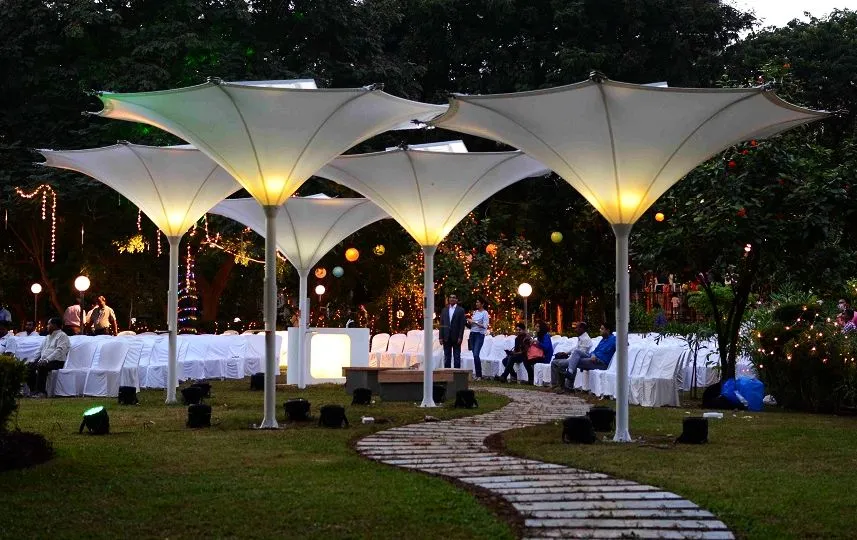
Ulta Chaata, a concave structure, collects rainwater in the monsoon and converts it into potable water. Find out how it’s done.
Ulta Chaata, as the name suggests, resembles an inverted umbrella. It is a large concave structure that collects rainwater in the monsoon and converts it into potable water, while the solar panels fitted alongside the canopy, produce energy in the dry season.
The rainwater collected in the bowl of the Chaata, trickles down the stalk to reach a filtering unit of activated carbon where it is cleared of impurities. A duster of ten or more Ulta Chaatas is connected to a common device where the water undergoes further filtration to remove microorganisms, making it fit for drinking. A single unit can harvest as much as 100,000 litres of water every year.
The solar energy harnessed in the dry season is stored in the battery and is used not just to light up the Chaata, but also the premises. Unlike a typical rainwater harvesting unit, Ulta Chaata’s attractive design lends itself well to the aesthetics of the surroundings, especially when lit up.
The device takes up to one sq. ft of area. Ulta Chaatas can be installed as sustainable workstations in open spaces. They can provide a green roof for reception areas, cafeterias, gazebos, car parks, bus stops and even railway stations.
Besides a number of corporates, Guntakal railway station in Andhra Pradesh has installed six such structures on its premises.
Ulta Chaata is the brainchild of a Mumbai-based environmentally conscious couple Priya Vakil and Samit Choksy whose start-up ThinkPhi designs sustainable products.
Ulta Chaatas can be installed as sustainable workstations in open spaces. They can provide a green roof for reception areas, cafeterias, car parks, bus stops and even railway stations.
QUICK FACTS
- A single unit of Ulta Chaata can harvest as much as 100,000. litres of water every year.
- Ulta Chaata’s attractive design lends itself to the aesthetics of the surroundings.
- The solar panels fitted alongside the canopy produce energy in the dry season.
Picture Credit : Google




